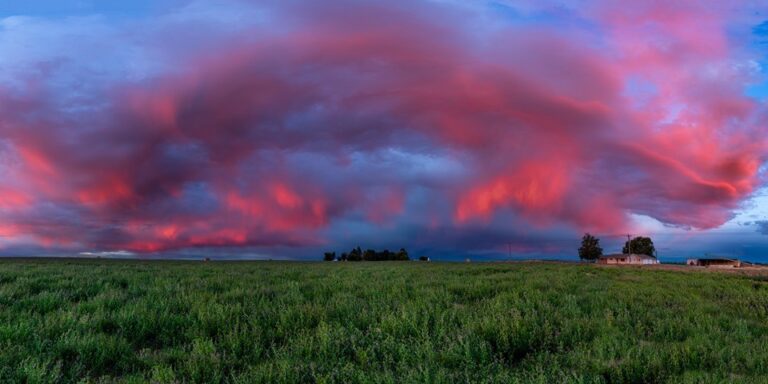
Pink Clouds, by Kevin Roylance
They float over our heads, soundless, often unnoticed, though the messages they bring could be portentous. Clouds foretell weather events from hours, even days, away.
Snow, hail, electrical storms, powerful winds, rain—the lack of rain—all may be made known to us long before they are upon us, sometimes, in technicolor, as in this spectacular photograph which is the work of a local photographer specializing in skyscapes, Kevin Roylance, of Moses Lake, Washington.
Here, in the Columbia Basin, I’ve seen such displays myself, from the deck of our home, or while out for a drive, but I trust the photography to Mr. Roylance who, as you would learn from his Facebook page, regularly spends many hours chasing the sky.
Clouds communicate by suggestion. In their shapes we see sleeping dogs, writhing dragons, or a band of sheep. We conjure the rise of rolling hills, ocean waves, drifting snow.
Clouds speak to our imagination; they are an invitation to mental meandering; they give us permission to ponder. Clouds can be the trailing threads of dreams.
The skies of Central Washington provide a phenomenal canvas for nature’s artwork. My husband and I often exclaim about clouds with only a general idea of their types and the sort of weather with which they might be associated, and so, I searched for useful terminology. I learned that our system for classifying clouds was developed by Luke Howard, who was born in London in 1772.
By faith, a Quaker, Mr. Howard was in the business of pharmaceutical chemicals manufacture. But his deep and abiding interest was meteorology. His system, originally proposed in 1802 and still in use today, assumes three basic cloud classifications, the Latin names of which, when translated, are amusingly down to earth: cirrus – curling lock of hair; cumulus – heap; stratus – something spread.
These three names are combined, then, to denote four additional types of clouds: cirrocumulus, cirrostratus, cumulostratus, and cumulocirrostratus. That last one certainly rolls off your tongue, doesn’t it? Perhaps that’s why these rain clouds are often called, “nimbus.”
Clouds draw our eyes to the sky. Looking up we are reminded we are tenants, our feet lightly planted on the ever-spinning earth. Nothing is ever still.
Isn’t that exhilarating?
